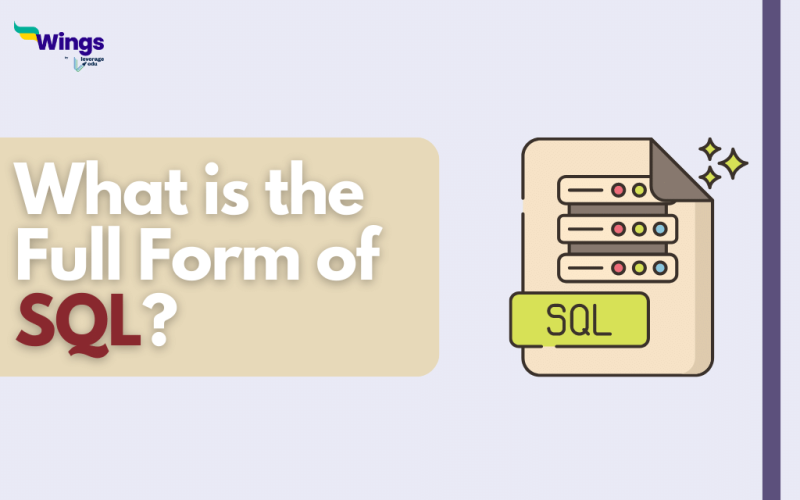SQL full form is Structured Query Language, a programming language used for managing and manipulating data stored in relational databases. SQL is widely used in software development, data analysis, and other fields that deal with large volumes of data.
SQL allows users to create, modify, and query relational databases using a standardized syntax. It consists of a set of commands and statements that can be used to perform various tasks such as creating tables, adding or deleting data, and retrieving data from databases. The language is designed to be easy to use and efficient, even when dealing with complex queries involving multiple tables and large amounts of data.
One of the key features of SQL is its ability to handle structured data. Structured data is organized in a way that allows it to be easily analyzed and queried. SQL provides a powerful set of tools for working with structured data, including the ability to join tables together, aggregate data, and sort and filter data based on specific criteria.
SQL is used by various organisations and industries, including finance, healthcare, and e-commerce. It is a critical tool for managing and analyzing data and is considered one of the core technologies in the field of data management. With the growth of big data and the increasing importance of data-driven decision-making, the use of SQL is likely to continue to grow in the coming years.
History of SQL
Table of Contents [show]
Structured Query Language (SQL) was first developed in the 1970s by IBM researchers Donald D. Chamberlin and Raymond F. Boyce. The language was originally called SEQUEL (Structured English Query Language) and was designed to manipulate and retrieve data stored in IBM’s System R relational database management system.
In the following years, SQL was adopted by other database management systems, such as Oracle, Microsoft SQL Server, and
PostgreSQL, and became the de facto standard language for managing relational databases.
Over the years, SQL has evolved to include new features and functionality, such as support for transaction management, data integrity, and security. In the 1990s, the ANSI and ISO standards organizations developed a standardized version of SQL, which helped to ensure that the language was consistent and interoperable across different database management systems.
Today, SQL is used by millions of developers and data analysts around the world to manage and analyze data stored in relational databases. It is a critical tool for organizations in a wide range of industries, from finance and healthcare to e-commerce and social media.
Also Read: SQL Interview Questions
Purpose of SQL
- Information gathering. Using analytical queries as well
- Creating Data Integration Scripts
- Changing the database table and creating mark designs
Also Read: What is Database Architecture?
This was all about the Full Form of SQL. Visit our Full FormPage to discover more intriguing articles about full forms. You can also get a consolidated list of 300+ full forms here! Get in touch with the experts at Leverage Edu in order to kickstart your study abroadjourney!
 One app for all your study abroad needs
One app for all your study abroad needs















 45,000+ students trusted us with their dreams. Take the first step today!
45,000+ students trusted us with their dreams. Take the first step today!
